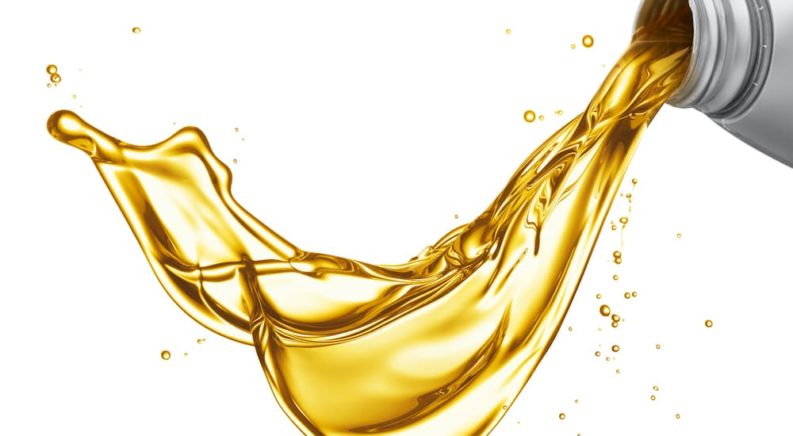Your vehicle is an investment and, like any solid investment, requires regular maintenance to ensure its longevity and usefulness. At the top of that maintenance list should be regular oil changes, which you can either do yourself or take to a dealer or local mechanic by merely conducting a quick search for an “oil change near me.” But, then again, you may still be wondering, “Why are regular oil changes important?”
Oil is a lubricant, and with the many moving parts of the engine, a lubricant is vital to ensuring your vehicle performs at its best. Without oil, the engine’s parts will rub against one another and create friction, which is an engine’s worst enemy. Friction forces the engine to work harder and, over time, can cause long-term damage, reduced fuel efficiency, and greater pollution. Let’s learn more about how lubrication, friction, fuel efficiency, and performance all come together to explain why regular oil changes are vital to your vehicle’s life and performance.
Lubrication
Whether you drive a sedan, SUV, truck, or sports car, the engine in your vehicle is made up of many moving parts like the valves, pistons, crankshaft, and rods that must be lubricated to work properly. The oil in the engine lubricates those parts to ensure they continue functioning. The engine, however, is constantly exposed to debris, dust, dirt, and grime, all of which are detrimental to its longevity and performance. That same debris is also harmful to the oil and, over time, causes it to break down or turn into sludge.
As the oil in the engine breaks down, it struggles to perform its essential duty—lubricating the engine. Regular oil changes ensure the engine is properly lubricated and working at its best. By regularly changing the oil, drivers can actively monitor the oil levels and change the oil filters to ensure no dirt or debris can damage the engine and reduce its longevity and performance.

Friction
Leaks or inefficiencies in the engine can cause your car’s oil levels to drop and lead to insufficient lubrication. If this goes unnoticed or untreated, the moving engine parts create more friction by rubbing against one another without proper lubrication. This creates unnecessary heat that can cause the engine to overheat or, in severe cases, even seize up entirely.
Fuel Efficiency
Dirty or contaminated oil has a direct effect on fuel efficiency, which is another reason why regular oil changes are important. Many factors determine fuel efficiency, such as driving style, terrain, and environment, but vehicle maintenance also plays an important role. When the oil is left unchecked, this causes more friction in the engine. The more friction, the less efficient your engine runs, which means an increase in fuel consumption. But how much? According to the United States Department of Energy, routine oil changes can improve fuel efficiency by one gallon of gas each year.
Protect the Environment
Aside from ensuring your engine performs at its best, regular oil changes also reduce a vehicle’s carbon footprint. All vehicles must pass an emissions test, which measures the number of hydrocarbons the engine releases into the atmosphere. Regularly maintained engines usually have low emissions and produce less pollution. On the other hand, engines running on contaminated oil produce more hydrocarbons in the engine’s crankcase. This means that more hydrocarbons are released into the atmosphere through the exhaust, which pollutes the environment.
How to Start a Regular Oil Maintenance Routine
If you don’t have a regular maintenance plan in place, starting routine oil maintenance is not difficult. Today, most cars, SUVs, and trucks feature service reminders that automatically alert drivers to necessary repairs or maintenance like oil changes based on miles traveled or engine issues. For vehicles that do not come equipped with these features or to identify an unfamiliar alert, reference the vehicle’s owner’s manual.
Scheduling an Oil Change
Once your car alerts you that you need an oil change, it’s a good idea to schedule a service appointment. A quick search for an “oil change near me” will produce dozens of results for mechanics in the area who can provide the service. As always, be sure to read the reviews of various shops to ensure you’re working with a reputable mechanic.

Frequency of Oil Changes
“How often should I get my oil changed?” The answer to this question usually varies depending on the mechanic and vehicle. Some people live by the traditional 3,000-mile rule, but this standard is largely a thing of the past. Modern engines and synthetic oils mean that you should only require oil changes every 7,500 to 10,000 miles. However, to get the best answer, reference your owner’s manual as this is the most authoritative source on your vehicle.
But what happens if you don’t drive your vehicle frequently? Does this mean you don’t need regular oil changes? While driving less often does mean that you will likely need fewer oil changes, you must keep in mind that oil breaks down over time and becomes less effective the older it gets. When a vehicle sits for long periods, moisture can build up and damage the engine. This also affects the oil’s ability to perform as a lubricant for the engine’s moving parts.
Monitoring Your Oil Levels
If your vehicle is not yet due for an oil change, it’s a good idea to monitor the oil levels at least once a month to ensure there is plenty of oil and identify any potential leaks. The owner’s manual is the best starting point to monitor your oil levels as the book will outline the type of oil and how much oil your engine needs. Once you determine this, park the vehicle on level ground, turn the engine off, pop the hood, and locate the dipstick.
After locating the dipstick, grab an old rag or paper towel and remove the dipstick from the engine. Wipe away the oil, reinsert the dipstick into the tube, and remove it again. Look at both sides of the dipstick to determine the oil level. The dipstick should have an indicator – usually L (low) and H (high), Min and Max, crosshatches, or two pinholes. As you’re looking at the indicator, note the color of the oil, which should be brown or black, and the presence of any debris.
If the oil level is low, add oil based on the owner’s manual specifications. If the oil is not black or brown but milky in color, or if metal debris is present, this could signify a bigger problem and will require a mechanic. If the oil level is between the indicators, the oil level is fine, and you can simply replace the dipstick and close the hood.
Taking Over Your Oil Maintenance Routine
One of the biggest responsibilities of owning a vehicle is ensuring it is properly maintained. This begins with monitoring your oil levels and regularly changing the oil. The many moving parts of the engine require lubrication, and when that lubrication breaks down, the engine no longer performs at its best. This can be detrimental to an engine and can cost a lot more to repair in the long run than a simple oil change. If your “Check Engine Oil” light is on or you know it’s time for an oil change, it’s time to schedule an appointment with your dealership or a local mechanic.

